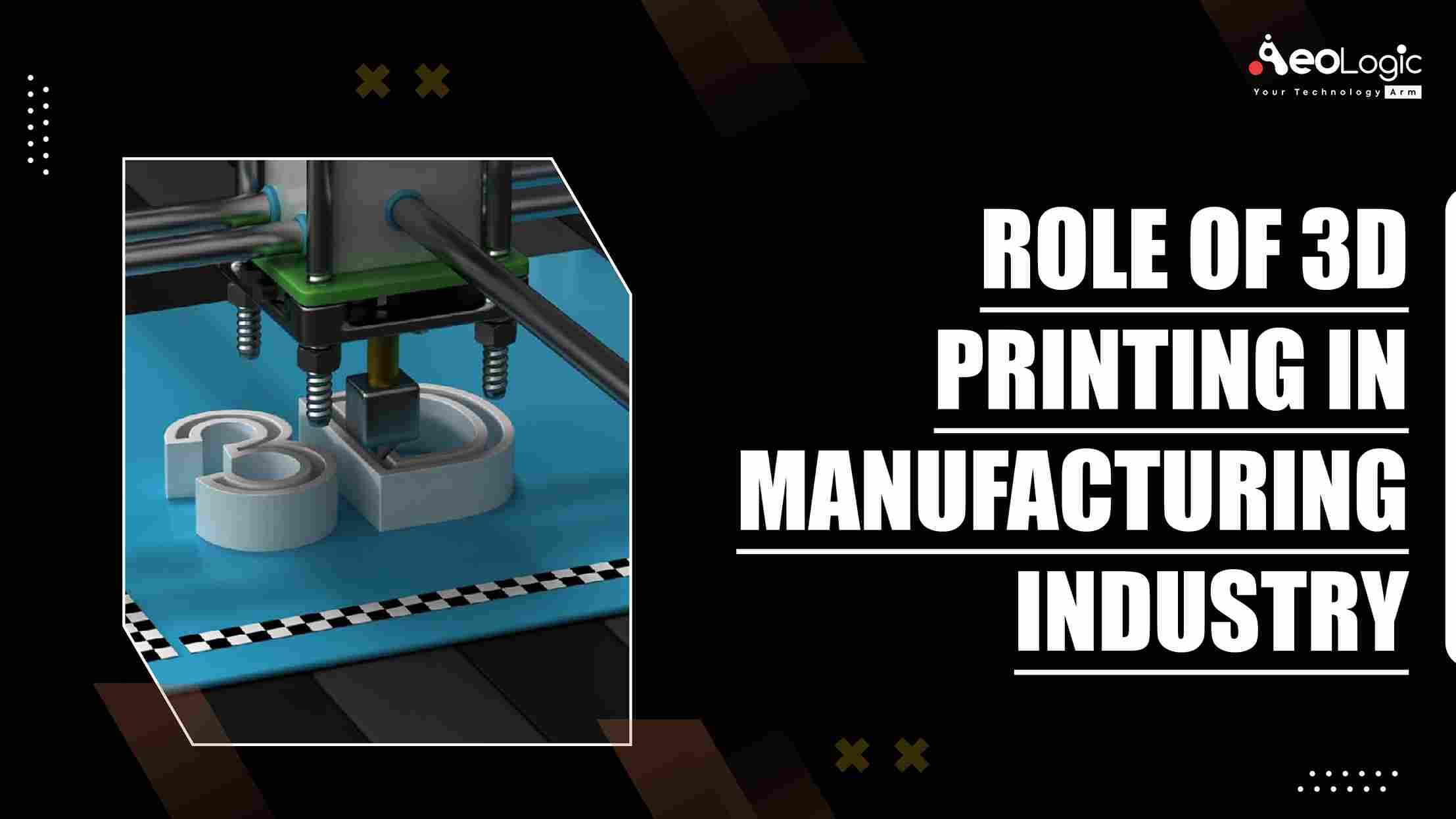Role of 3D Printing in the Manufacturing Industry
With the onset of the 21st Century, the world is observing the Industry 4.0 revolution. At the heart of this revolution are digitization and smart manufacturing processes of industry and business-related functions. The role of 3D printing in manufacturing is a major component in the proliferation of Industry 4.0 processes. This disruptive technology is coming with components such as artificial intelligence, machine learning, 3D printing, cloud technology, and additive manufacturing.
Also read: Role of Digital Transformation in Manufacturing
What is the role of 3D Printing in Manufacturing?
The role of 3D printing in manufacturing process is extensively used to describe additive manufacturing. Using a 3D printer, this process is involving adding material layer by layer, such as plastic or metal, producing a three-dimensional object.
As one of the tools for rapid prototyping, 3D printing is enabling manufacturers to produce complex parts with speed and cost-effectiveness. Prototypes designed using 3D technology are used in the research and development stage for fixing design problems before initiating mass production.
The Benefits of 3D Printing in Industry 4.0
While 3D printers came into the market in the 80s, they are becoming crucial in the fourth industrial revolution. The adoption of automated processes and technology in several sectors and industries is contributing to the evolution of 3D technologies or additive manufacturing.
Companies are investing in this technology for improving the quality of products and keeping up with the Industry 4.0 revolution. Let’s take a look at the benefits of 3D printing in Industry 4.0.
Quality Prototypes
The evolution of 3D technologies has been significant in the rapid prototype process. Manufacturers are now relying on advanced software for producing complex three-dimensional objects before getting to the mass production phase.
Printing Speed
Research and Development (R&D) departments often require prototypes for new products. Using 3D printing services accelerates the process. And helps designers in saving time and money.
Compared to previous years, the printers’ speed has been improving, and can now customize parts in minutes. If there are any alterations in design, the engineers can make the corrections quicker.
Environmental Impact
Traditional manufacturing is contributing to a lot of waste materials. However, with many nations now keen on environmental conservation and mitigating carbon emissions, additive manufacturing is a better option.
Instead of removing waste, 3D printing is combining multiple layers to create parts. With the latest advanced technology, the printers are making a single copy, decreasing unsold inventory. Some 3D printers can also use recycled material, considerably reducing environmental effects and waste.
Cost and Pricing
Due to the effectiveness of 3D printers, their cost is considerably high. Their market prices are depending on the purpose and material requirements. With the increase in demand for rapid prototyping, printer costs are also dropping. For companies involved in rapid prototyping on a higher scale, it’s more cost-efficient for investing in high-tech 3D printing for your clients.
Printing Material
With additive manufacturing, you can use several types of materials, from plastic, and wood to metal. 3D printers can print a broad array of materials. Therefore, the company will be able to produce quality parts in any material depending on the client’s requirements.
Technology Advancement
In the current Industry 4.0, new software and digital updates are coming up every time. 3D printing services are remaining critical in manufacturing processes due to their ability for evolving with the latest technology. The role of 3D printing in manufacturing in the future will continue to increase, particularly for rapid prototyping.
Industrial Applications of 3D Printing
The international demand for customized parts is resulting in a surge for 3D printed parts in several sectors. Following are some of them.
Medical and Dental
3D printing services are advantageous in the medical and dental sectors. From prosthetics, and implants to bioprinting, medical personnel can get patient-specific devices. During this COVID-19 pandemic, 3D has been used to print ventilator valves, as well as hand-free door handles for hospitals.
Automotive
This industry is one of the very significant users of additive manufacturing. Designers and engineers are using 3D printing for creating complex parts and customizing some such as seats, replacement, and spare parts. It’s also developing prototypes for new models.
Aerospace and Defense
In the aerospace industry, 3D printing services have been used for many years now. Apart from creating prototypes, they are used to tool and construct lightweight components. And thus, creating authentic, functional pieces for a plane. This technology is heavily relying on the manufacturing of rockets.
Also read: The Future Scope of 3d Printing Technology
Summary
As a core component in the Industry 4.0 revolution, the role of 3D printing in manufacturing, also known as additive manufacturing, is a manufacturing necessity. Key industries and sectors are requiring high-quality complex parts that manufacturers can produce in the shortest time. 3D printing is meeting these standards as a crucial tool in the rapid prototype process.
We customize our manufacturing services to meet your product-specific design requirements. To schedule a free consultation call, contact us now!
FAQs
How 3D printing is impacting the manufacturing industry?
The businesses that are making the change to 3D printers will operate with far fewer staff, less overhead, and higher profits. The buildings they are managing will be smaller, and the products will turn out quite similar to what was manufactured in the past
What is the scope of 3D printing in manufacturing?
Consecutively, 3D printing will be bigger, faster, and cheaper. The answer for the new generation of printers, specifically industrial-grade solutions, will be the ability to handle a higher range of advanced materials. This is opening the door for businesses to benefit from additive manufacturing in areas where they previously could not.










